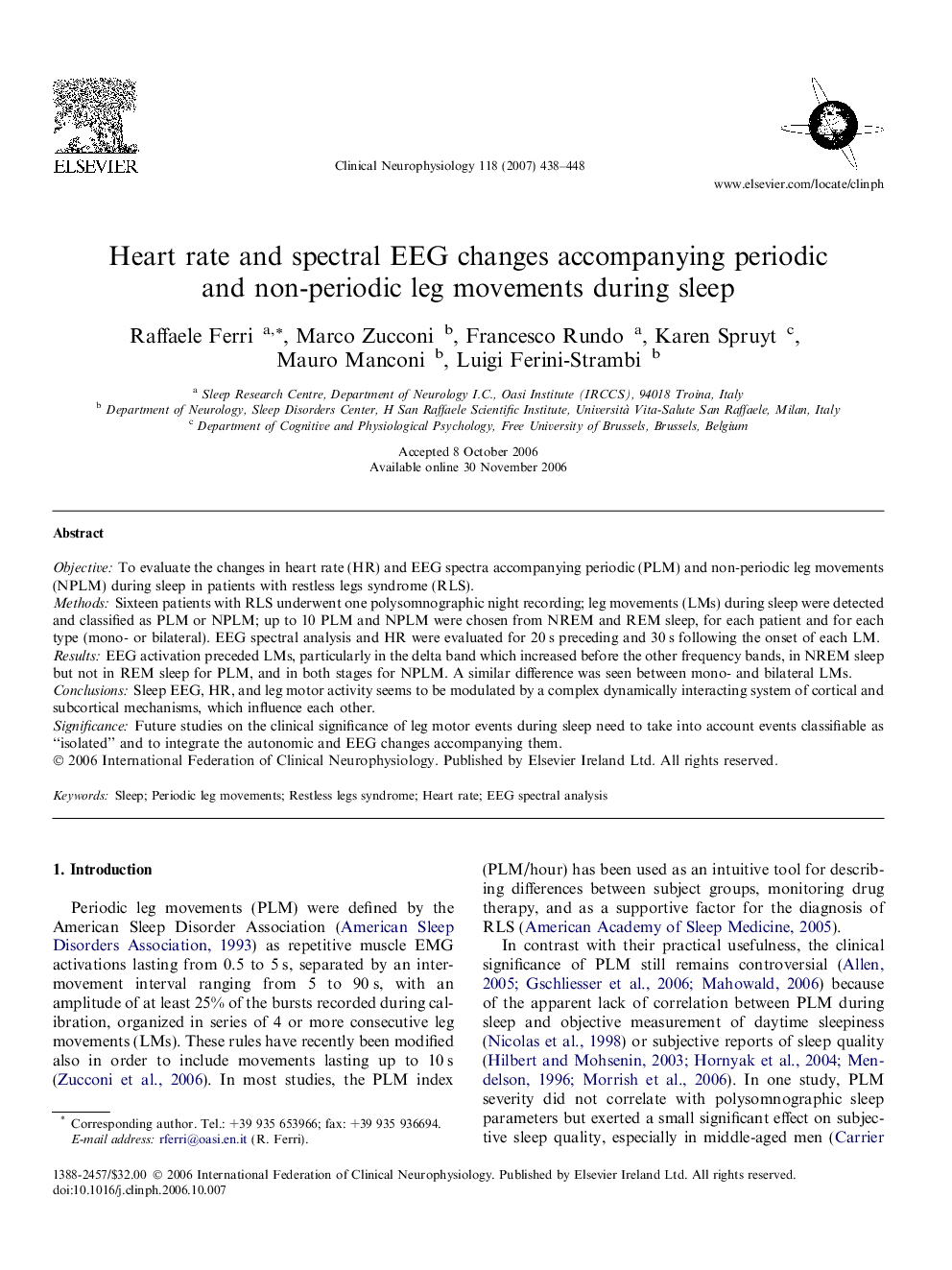| Article ID | Journal | Published Year | Pages | File Type |
|---|---|---|---|---|
| 3048026 | Clinical Neurophysiology | 2007 | 11 Pages |
ObjectiveTo evaluate the changes in heart rate (HR) and EEG spectra accompanying periodic (PLM) and non-periodic leg movements (NPLM) during sleep in patients with restless legs syndrome (RLS).MethodsSixteen patients with RLS underwent one polysomnographic night recording; leg movements (LMs) during sleep were detected and classified as PLM or NPLM; up to 10 PLM and NPLM were chosen from NREM and REM sleep, for each patient and for each type (mono- or bilateral). EEG spectral analysis and HR were evaluated for 20 s preceding and 30 s following the onset of each LM.ResultsEEG activation preceded LMs, particularly in the delta band which increased before the other frequency bands, in NREM sleep but not in REM sleep for PLM, and in both stages for NPLM. A similar difference was seen between mono- and bilateral LMs.ConclusionsSleep EEG, HR, and leg motor activity seems to be modulated by a complex dynamically interacting system of cortical and subcortical mechanisms, which influence each other.SignificanceFuture studies on the clinical significance of leg motor events during sleep need to take into account events classifiable as “isolated” and to integrate the autonomic and EEG changes accompanying them.
